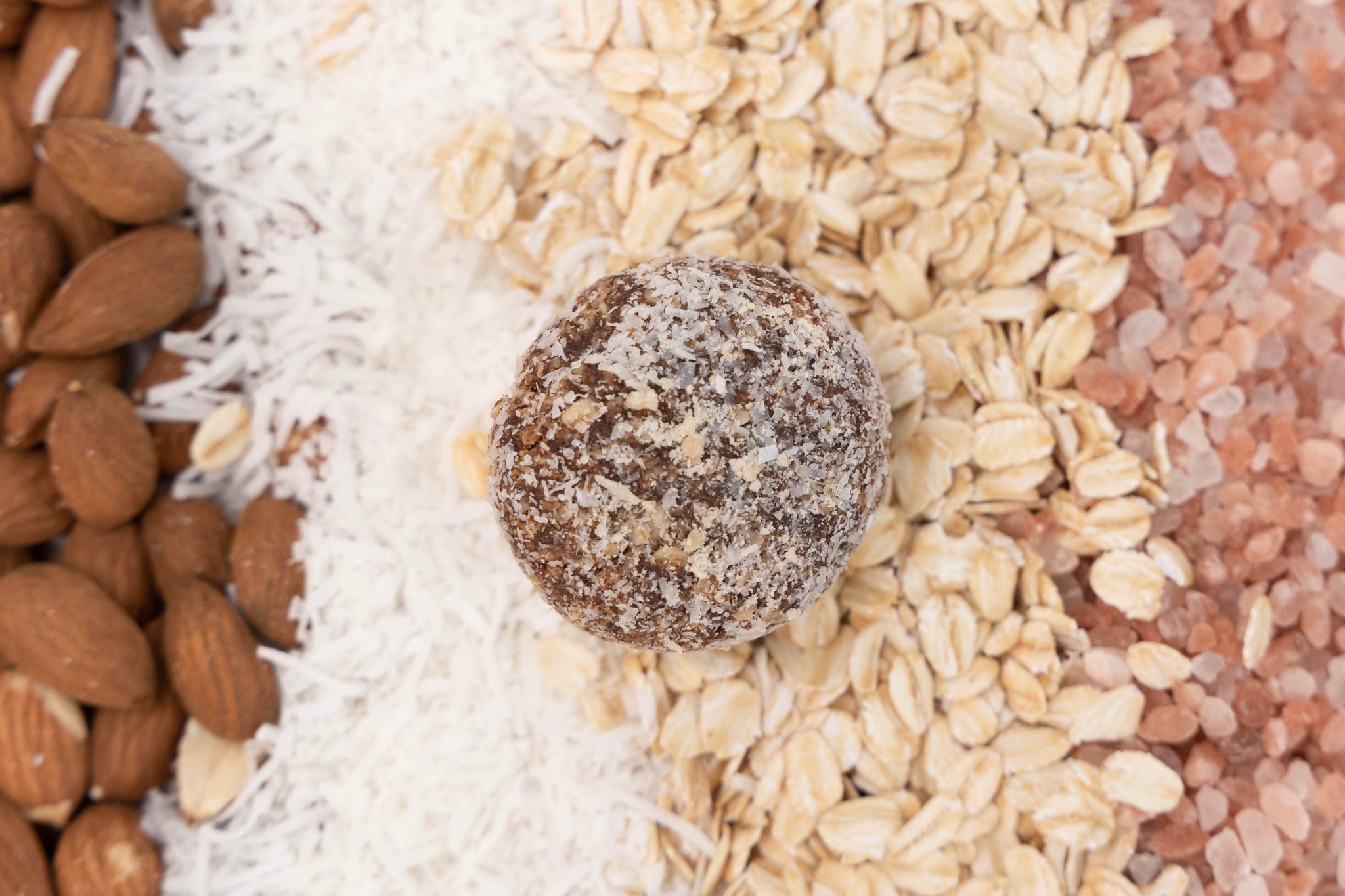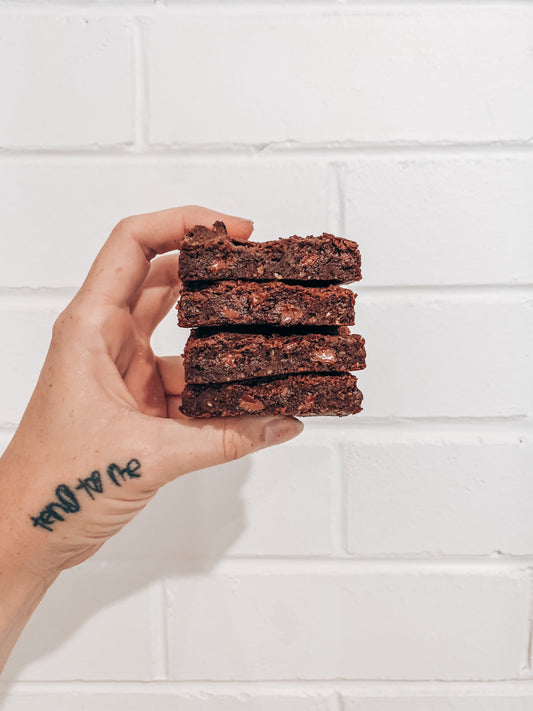Many foods in todays modern society are processed for convenience, leaving zero to little nutritional value. We get that choosing a snack from the supermarket shelves can be confusing and overwhelming. There are many options, but little quality options available. In fact many contain preservatives, additives, flavours, colours, and GMOs. So it’s understandable why it can be hard to know what you should be eating to best nourish your body and support your health.
Understanding how to read and decipher food labels can help you to make healthier choices when choosing snacks.
Here's our top tips and a few things to look out for:
1. Ingredients list
We always read the ingredient list first. This'll give you a good indication of the nutrient density. Legally, food ingredients must be labelled from largest to smallest by weight. Which is a good way of determining how much of an ingredient you are consuming. Try to pick a product that has the most natural ingredients and steer away from artifical prevervatives, colours, flavours, and ingredients you can't pronouce. Personally for me, it mostly comes down to the ingredients. If i'm not happy with ingredients on the list I will move on to assess the next product.
2. Serving Size
If you want to compare the nutritional value of similar products, compare the 100g serving size (usually the second column on a nutrition panel). We don't recommended comparing the ‘serving size’ as these differ per product. For example, some snacks may be 40g and others may be 50g or 60g, comparing this field would not be accurate.
3. Energy (Calories)
Simply put a calorie is a unit of measurement — but it doesn't measure weight or length, it measures energy. It is the amount of energy released when your body breaks down (digests and absorbs) food. Calories are the sum of the protein, carbohydrates and fats in a food. Calories can be used to maintain, gain or loose body weight. The best way to identify your recommended daily calorie intake is by chatting with a qualified nutritionist, as this will vary from person to person dependent on age, size, height, sex, lifestyle, and overall general health. I'm not going to go into depth here, I don't personally ‘count’ calories, but it's a good idea to know and understand your recommended daily calorie intake to know if you are eating too much or too little food for optimum health.
4. Macros (Proteins, Fats, Carbohydrates)
The recommended daily intake of protein is 15–25%, 20–35% of fat and 45–65% of carbohydrates. Again this will vary person to person, dependant on fitness goals and health. It's also relevant to note there are good fats (natural) and there are not so great fats. This will largely come down to the ingredients. For example nuts contain mainly monounsaturated and polyunsaturated fats. These types of fats are known as “good fats”. They can help lower cholesterol when we eat them in place of saturated fats. To clarify, saturated fat is not a ‘bad’ fat, it's something to be considered in moderation. For example when it comes to saturated fat content of coconut, it contains MCTs (medium-chain triglycerides) which is the kind of fat that is easily absorbed during digestion and can be quickly used by your body to produce energy.

5. Sugar
Sugars are carbohydrates that occur naturally in many foods but are also added as ingredients to foods. This is where the ingredients list comes in. If you've picked up a product with all natural ingredients you can be sure the ‘sugars’ on the nutritional panel are naturally occuring. If you've picked up a product and ‘sugar’ is listed in the ingredients list, this is an added refined sugar. Keep in mind a product may say it is low sugar, yet still contain nasty artificial sweeteners. Products can also contain natural sweeteners like maple syrup and monk fruit, which are some of our favourite tummy friendly natural sweeteners.



